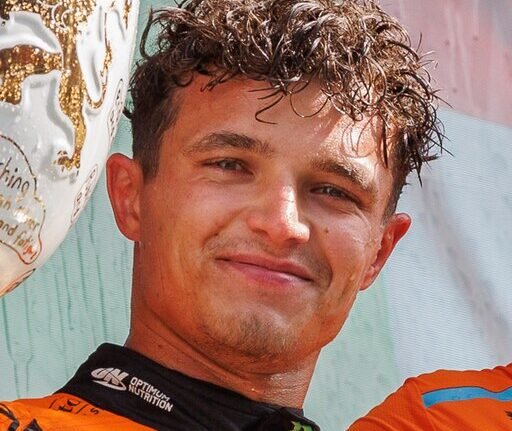McLaren reveals they never expected Norris’ bold one-stop strategy to succeed at the Hungaroring
McLaren has admitted it never intended for Lando Norris to run a one-stop strategy at the Hungarian Grand Prix – yet the approach, which team boss Andrea Stella initially thought impossible, ended up working to perfection.
Going into Sunday’s race at the Hungaroring, Pirelli’s analysis suggested a two-stop plan was the “dominant strategy”, with the tyre supplier estimating a one-stop would be around 10 seconds slower. Even cooler conditions on race day were expected to favour multiple tyre changes.
McLaren’s plan reflected that prediction. Both Norris and team-mate Oscar Piastri were set to run aggressive two-stoppers, with Piastri’s race specifically built around undercutting Ferrari’s Charles Leclerc. But the race took an unexpected turn almost immediately.
Norris, starting third, dived to the inside into Turn 1 in an attempt to pass Piastri, who had lined up second. The move failed, and in backing out he lost places to George Russell and Fernando Alonso. Although Norris quickly re-passed Alonso, he became stuck in Russell’s wake. The delay began to open a potential window for a one-stop – though, as Stella revealed afterwards, the team still didn’t believe it would work.
Embed from Getty Images“Our baseline strategy today was a two-stop,” Stella explained. “We didn’t think necessarily that the one-stop was possible.”
While Piastri pitted on lap 18 for hard tyres in an effort to jump Leclerc, Ferrari covered the stop and both rejoined behind Alonso – who had stealthily upped his pace and slotted into their pit window. It took several laps for them to clear the Aston Martin, costing valuable time.
Meanwhile, Norris stayed out. As Alonso’s tactics and track position continued to create headaches for the two-stoppers, the possibility of running just one stop became more viable. Stella credited Norris for keeping his lap times competitive on worn tyres.
“Credit to Lando, he managed to put together strong sectors with tyres that were relatively used,” Stella said. “As we progressed with the first stint, we convinced ourselves the one-stop was getting into the game.”
The shift in strategy dynamics also affected Piastri. While earlier in the race he dismissed the idea of a one-stop, he later began asking whether it was possible. The concern was clear – his early undercut attempt on Leclerc could end up gifting Norris track position.
By the time Norris pitted at the end of lap 31, the advantage had swung his way. McLaren even tried a touch of strategic bluffing with Piastri, calling “box this lap” and sending mechanics to the pit apron on lap 39, prompting Ferrari to pit Leclerc. Piastri, however, stayed out for another six laps – losing significant time, including a two-second drop to Norris on lap 44 alone.
When Russell pitted on lap 42, Norris moved closer to the front and took the lead after Piastri’s final stop. Piastri then had to spend his tyre advantage passing Leclerc, rather than chasing his team-mate.
Asked whether McLaren had favoured Norris, Stella was firm in his denial. “We wanted to give Oscar enough of a tyre delta to pass Leclerc, but also a fair chance on Lando,” he said. “We checked with Oscar, and he wanted the opportunity to win. We thought with enough tyre delta, he’d have that chance.”
In the end, the team’s belief in a two-stop was overturned by events on track – and by Norris’ ability to stretch his tyres while still posting fast laps. What began as an enforced deviation from plan became the key to a standout result.
